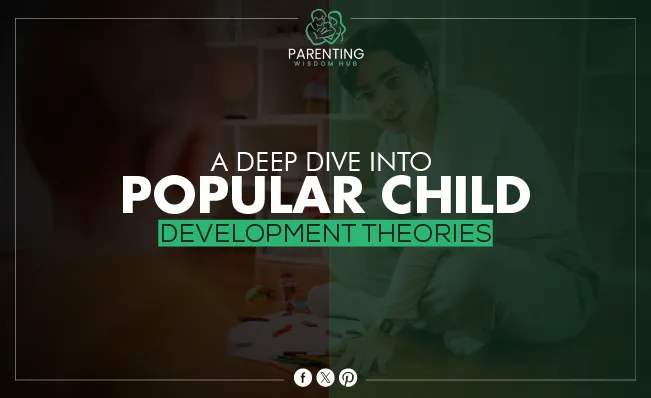Introduction
Child development theories help us understand how kids learn, grow, and change. Some of the most well-known psychologists and researchers of the last 100 years developed these ideas, greatly impacting how we think about child development. There are different theories about development, and each one sheds light on different areas, such as moral, social-emotional, and cognitive growth. This paper looks at some of the most famous theories about how children grow and develop and how they have greatly impacted how parents raise their kids and how schools teach.
Early Influences on Child Developmen
Many things are very important during the first few years of a child’s life. Some of these are:
Genetics: The genes a child is born with have a big effect on their physical traits and can also change their attitude and skills.
Parental Influence: The connection between a parent and child is very important to a child’s growth. As kids grow up, they often copy how their parents act, learning how to get around, deal with their feelings, and make friends.
Environment: What a child lives near, like home, school, and neighborhood, can affect their mental, social, and emotional growth.
Early Childhood Education: A child’s cognitive and social intelligence can be greatly affected by the education they receive when they are young.
Nutrition and Health: A child’s growth and brain development depend on diet and staying healthy. Not getting enough food or getting sick a lot can cause delays in growth.
Socioeconomic Status: A family’s socioeconomic position can affect a child’s access to resources, educational opportunities, and healthcare services, all affecting development.
Understanding these influences can help us understand how many complicated factors affect a child’s development and help us make environments that are good for learning and healthy growth.
Freud’s Psychosexual Development Theory
Psychosexual Development Theory, proposed by psychoanalysis’ father, Sigmund Freud, is a controversial child development theory. According to this hypothesis, inherent sexual energy, or libido, drives a child’s development by shifting focus between erogenous zones at different phases. Stages include:
Oral Stage (Birth to 1 year): At this age, the child gets most of their contact and pleasure from their mouth, like when they eat or explore their surroundings with their mouth.
Anal Stage (1 to 3 years): As a kid learns to control poop and other anal activities, the area where they feel pleasure moves to the anus. Freud thought that how parents handle toilet training can greatly affect their child’s growth.
Phallic Stage (3 to 6 years): This stage involves attraction to the opposite-sex parent and rivalry with the same-sex parent. Freud called this the Oedipus complex for boys and the Electra complex for girls when youngsters develop to identify with their same-sex parent.
Latency Stage (6 years to puberty): At this age, kids tend to focus on school, sports, and making friends with kids of the same gender. They don’t give in to their sexual urges.
Genital Stage (Puberty onwards): In this last stage of growth, sexual urges come back to life, which can lead to romantic interests and the start of mature sexual relationships.
Even though it has been criticized for focusing on sexual feelings, Freud’s theory has had a big effect on psychology and is still a key way to understand how children grow and develop.
Erikson’s Psychosocial Development Theory
German-American developmental psychologist and psychoanalyst Erik Erikson established the Psychosocial Development Theory, which prioritizes social development above psychosexual development. It claims that eight interconnected stages, each defined by a crisis or struggle, create our personality throughout our lives:
Trust vs. Mistrust (Birth to 1 year): Trust grows when caregivers consistently show dependability, care, and affection during this time. With this, people will trust you.
Autonomy vs. Shame and Doubt (1 to 3 years): This is where kids start to show their freedom. They are sure of their ability to live if praised and helped. That way, they might feel shame and doubt if they don’t.
Initiative vs. Guilt (3 to 6 years): At this time, kids start taking charge of their lives and feeling more powerful. At this time, success gives you a sense of purpose, while failure makes you feel guilty.
Industry vs. Inferiority (6 years to puberty): Kids must deal with new social and school expectations at this age. When you succeed, you feel competent; when you fail, you feel inadequate.
Identity vs. Role Confusion (Teen years into 20s): This stage is about getting to know yourself and finding your personality. When you succeed, you can stay true to yourself. When you fail, you get lost in your roles and have a weak sense of yourself.
Intimacy vs. Isolation (20s to early 40s): Currently, you’re focusing on getting close to other people and loving them. Failure leads to loneliness, while success leads to strong bonds.
Generativity vs. Stagnation (40s to 60s): In this case, people need to make or take care of things that will last longer than them. Failure makes you feel like you’re not involved in the world, while success makes you feel like you’re making a difference.
Integrity vs. Despair (late 60s and up): People now think about their lives. When you succeed in this phase, you feel wise, but when you fail, you feel sorrow, anger, and hopelessness.
Erikson’s theory, unlike Freud’s, looks at the whole life span and has had a huge impact on how we think about how personalities change over time.
Piaget’s Cognitive Development Theory
Swiss psychologist Jean Piaget established the Cognitive Development Theory, which states that children go through four phases of cognitive development marked by changes in their worldview. The stages are:
Sensorimotor Stage (Birth to 2 years): Infants and toddlers learn through sensory experiences and object manipulation. Understanding object permanence—that items exist even when they cannot be seen—is a major milestone.
Preoperational Stage (2 to 7 years): Children begin to think metaphorically and use words and pictures to represent objects at this stage. They are nonetheless egotistical and have trouble seeing things from others’ viewpoints.
Concrete Operational Stage (7 to 11 years): Children start to think logically about concrete occurrences and grasp conservation—that a substance’s amount remains constant despite shape changes.
Formal Operational Stage (12 years and up): This level involves abstract thinking, hypotheses, and metacognition. They can organize various variables, create hypotheses, and explore options.
Piaget’s theory has had a lasting effect on developmental psychology and is still used in schools.
Vygotsky’s Sociocultural Theory
A Russian psychologist named Lev Vygotsky came up with the Sociocultural Theory. This theory stresses the importance of social contact and cultural context in thinking and learning. Vygotsky made the following important points:
Social Interaction: Based on Vygotsky’s ideas, community was important in “making meaning.” A child’s cognitive development is greatly shaped by how they interact with others, like their parents, teachers, and peers.
More Knowledgeable Other (MKO): This is used when someone has a higher level of understanding or skill than the learner. An MKO doesn’t have to be an adult; a child’s friend can also be one.
Zone of Proximal Development (ZPD): The ZPD, according to Vygotsky, is the difference between actual development as determined by individual problem-solving and potential development as determined by adult assistance or collaboration with more capable peers.
Cultural Tools: According to Vygotsky, a child’s culture strongly affects cognitive development. Text and calculators are physical cultural tools, but problem-solving and counting are intangible.
There have been big changes in many areas because of Vygotsky’s social theory. For example, in education, new ways of teaching have been created to use a child’s ZPD.
Bowlby’s Attachment Theory
Attachment Theory, developed by British psychiatrist John Bowlby, emphasizes the importance of a strong and trustworthy mother-infant attachment on growth and wellbeing. This idea emphasizes these key points:
Proximity Maintenance: We must be close to the people we care about. This is clear from how babies cling to their parents to feel safe.
Safe Haven: The child will return to their attachment figure to feel safe and secure when there is fear or danger.
Secure Base: Attachment figures serve as a safety foundation for children, allowing them to venture out into the world around them and discover new things.
Separation Distress: Children are likely to experience distress when separated from the person who serves as their attachment figure.
Critical Periods: Bowlby thought that there is a time in a child’s growth when attachment experiences are very important. From birth to age two, this is the time frame.
Internal Working Models: Bowlby says that children form an “internal working model” of relationships based on the relationships they have in their early years. This model shapes how they think future relationships will be.
Bowlby’s attachment theory has greatly improved our understanding of child development and changed social work and child welfare.
Behaviorism and Skinner’s Operant Conditioning
Environmental cues influence behavior, according to behaviorism, the mainstream psychology theory. B.F. An American psychologist, Skinner is famous for his Operant Conditioning theory, which controls behavior via consequences. This theory emphasizes these ideas:
Positive Reinforcement: This happens when a behavior is followed by a trigger that makes the behavior more likely to happen again. For instance, a student might do their homework on time so that the teacher will praise them.
Negative reinforcement happens when an unpleasant trigger is removed after a behavior, making that behavior happen more often. One example is a student who works hard in school to avoid getting bad grades.
Punishment: This means a bad thing that happens after a behavior that makes that behavior less likely to happen again. For example, if parents scold their child for lying, the child might stop.
Extinction happens when the reinforcing behavior is removed, making it less frequent or stopping completely. A child stops having temper tantrums when they don’t get any attention for them.
Schedules of Reinforcement: Skinner discovered that the way and how often reinforcements are given changes the response’s strength and speed. You can make schedules that stay the same or change them based on time or the number of replies.
Operant Conditioning by B. F. Skinner has had a big impact on the fields of education and therapy. It shows how changing the surroundings can change behavior.
Bandura’s Social Learning Theory
Social Learning Theory, established by famous psychologist Albert Bandura, states that people learn from each other through observation, imitation, and modeling. Observing and modeling others’ behaviors, attitudes, and emotions is crucial. Key points of this theory:
Observational Learning: Bandura thought watching others was the best learning method. Cognitive processes like desire, retention, attention, and motor reproduction are all part of observational learning.
Intrinsic Reinforcement: These feelings come from inside, like joy, satisfaction, and a sense of doing a good job.
Extrinsic Reinforcement: This is a drive that comes from outside a person. External or outside benefits, like money or good grades, drive people.
Reciprocal Determinism: This part of Bandura’s theory says that people’s behavior, surroundings, and traits affect each other.
Modeling: This is a very important part of the learning process. Bandura said people learn by copying people they admire or connect with.
Self-Efficacy: This is the faith that one has in one’s ability to plan and carry out the actions needed to handle future events.
Bandura’s Social Learning Theory has greatly impacted many areas, such as communication, education, and therapy. It has given us useful information about how people learn.
Kohlberg’s Moral Development Theory
Lawrence Kohlberg, an American psychologist, proposed a moral development theory emphasizing an individual’s moral growth. Kohlberg’s thesis uses staged moral reasoning. Key points of this theory:
Pre-conventional Morality (Stages 1 and 2): Although children are more likely to have this morality, adults can also. Morality is related to personal consequences, including obedience, punishment, and favors.
Conventional Morality (Stages 3 and 4): This moral development is common in teens and adults. People start to regard social norms and others’ expectations in their moral reasoning at this level, displaying compliance and law-and-order orientation.
Post-conventional Morality (Stages 5 and 6): People contemplate abstract ethical concepts and social contracts above cultural standards. Legal principles are seen in terms of their philosophical foundations (such as human rights or social welfare), not only as legislation.
Moral Dilemmas: Kohlberg looked at moral problems, like the Heinz Dilemma, to determine how people make moral choices. He was more interested in why a choice was made than in its choice.
Critiques of Kohlberg’s Theory: Despite its importance, Kohlberg’s thesis has been critiqued for cultural and gender bias. The idea may favor Western morality and ignore other moral frameworks.
Influence on Education: Kohlberg’s theory has greatly affected education and how classes work. It stresses how important it is for students to talk about moral problems to improve their reasoning.
Kohlberg’s moral development theory has helped psychologists, educators, and social workers understand how moral reasoning changes.
Gardner’s Theory of Multiple Intelligences
Developmental psychologist Howard Gardner established the Theory of Multiple Intelligences, which holds that intelligence is multi-dimensional and IQ testing is overly narrow. Key points of this theory:
Linguistic Intelligence: Being sensitive to spoken and written language and learning languages and languages to get things done are all signs of this type of intelligence.
Logical-Mathematical Intelligence: To do this, you need to think rationally about problems, do math, and look into things scientifically.
Musical Intelligence: This intelligence can pick up on tone, music, timbre, rhythm, pitch, and meter. Composers, directors, musicians, and people who listen carefully may all have it.
Bodily-Kinesthetic Intelligence: It means using your whole body or different parts of your body to make things or solve problems.
Spatial Intelligence: In this case, the ability to see and change the patterns of large and small spaces is needed.
Interpersonal Intelligence: This means figuring out what others want, why, and how they feel about it. This lets you work well with others.
Intrapersonal Intelligence: It is necessary to have the ability to comprehend oneself and to have an appreciation for one’s emotions, worries, and the things that drive one.
Naturalistic Intelligence: The ability to identify, classify, and draw upon specific aspects of the surrounding environment is required for this objective.
Gardner’s hypothesis has influenced education, with many teachers using multiple intelligences to accommodate pupils’ talents and learning styles.
Conclusion
Finally, learning and development theories shape our knowledge of human behavior and learning. Bandura’s Social Learning Theory, Kohlberg’s Moral Development Theory, and Gardner’s Theory of Multiple Intelligences provide comprehensive insights into learning, affecting education, psychology, and social work. These views emphasize that learning is dynamic, continual, and interwoven with our environment, morality, and intrinsic skills. They help educators, therapists, and researchers develop effective tactics and interventions to improve learning outcomes.


